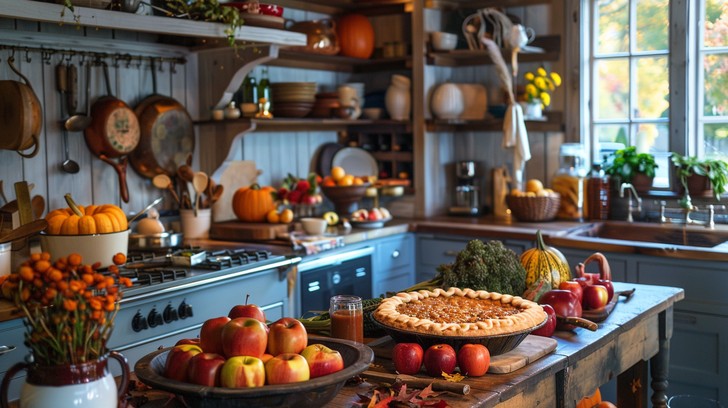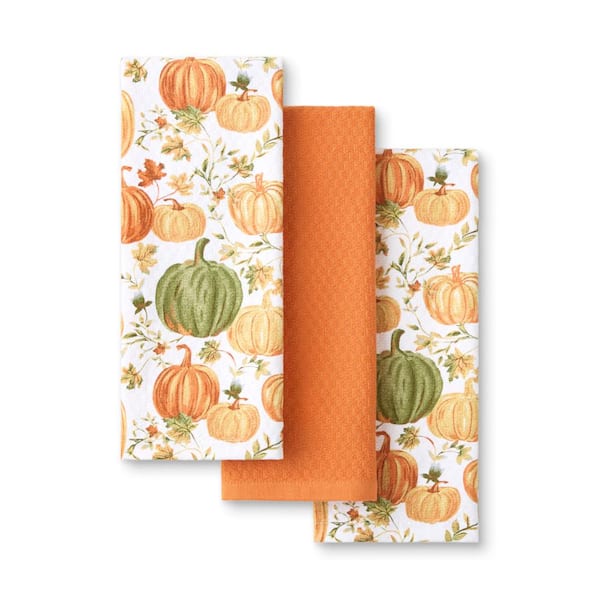
Autumn's Embrace: A Farmhouse Kitchen Recipe for Simple Harvest Stew
The wind whispers secrets through the bare branches outside, rustling the last stubborn leaves clinging to the trees. Inside, a warmth emanates not just from the crackling fire in the hearth, but from the heart of the kitchen – a pot simmering with the essence of the season. It’s a time for slowing down, for embracing the simple pleasures, and for nurturing ourselves with the bounty of the land. Today, we're making a hearty Harvest Stew, a recipe that embodies the spirit of self-sufficiency, seasonal eating, and cozy living. This isn’t just a meal; it's an experience, a way to connect with the rhythm of nature and bring the warmth of autumn into your home. This Farmhouse Kitchen Recipe is sure to become a staple in your home!

Ingredients & Tools: A Celebration of the Harvest
Our Seasonal Homestead Cooking always starts with the best ingredients possible. For this stew, we'll be drawing from both pantry staples and the vibrant produce of the autumn harvest. The goal is to create a simple, wholesome recipe that integrates seamlessly into a self-sufficient lifestyle. Don't be afraid to adapt – that's the beauty of homesteading!
Pantry Staples:
- 2 tablespoons olive oil (or rendered lard, for a truly rustic farmhouse cooking experience)
- 1 large onion, chopped
- 2 cloves garlic, minced
- 4 cups vegetable broth (or homemade bone broth for extra nourishment)
- 1 teaspoon dried thyme
- 1/2 teaspoon dried rosemary
- Salt and pepper to taste
- 1 cup dried beans, soaked overnight (such as kidney, pinto, or cannellini) - can also use canned beans
- 2 tablespoons flour, if you want to thicken (all-purpose or freshly milled for a Homegrown Ingredient Recipe). Store-bought is also acceptable if you are just starting out.
Seasonal Harvest:
- 2 cups chopped root vegetables (carrots, parsnips, turnips – the joy of harvesting your own vibrant carrots adds so much to the dish!)
- 2 cups chopped squash (butternut, acorn, or pumpkin)
- 1 cup chopped celery
- 1 cup chopped potatoes (Yukon gold or red potatoes work well)
- 1 cup chopped sun-ripened tomatoes (or a can of diced tomatoes if fresh are unavailable)
- 1/2 cup chopped fresh parsley (or 2 tablespoons dried) - use homegrown herbs still fragrant from the garden.
Tools:
- Large stockpot or Dutch oven – Best tools for farmhouse kitchen.
- Cutting board
- Sharp knife
- Wooden spoon
Homestead Substitutions:
- Flour: If you have a grain mill, use freshly milled flour to lend a nutty depth to the stew. Otherwise, all-purpose flour works just fine.
- Sweetener: Swap granulated sugar for maple syrup or raw honey sourced from local hives for a touch of natural sweetness.
- Herbs: Use homegrown herbs, dried or fresh, for the most intense flavor.
- Broth: Homemade bone broth adds incredible richness and nutritional value.

Step-by-Step Instructions: From Garden to Table
This Self-Sufficient Recipe is easier than you may think! Let's walk through it together.
- Prepare the Beans: If using dried beans, rinse them thoroughly and soak them in water overnight. This reduces cooking time and improves digestibility. Drain and rinse the soaked beans before adding them to the stew.
- Sauté the Aromatics: Heat the olive oil (or lard) in a large stockpot or Dutch oven over medium heat. Add the chopped onion and celery and sauté for 5-7 minutes, until softened. Add the minced garlic and cook for another minute until fragrant.
- Add the Root Vegetables and Squash: Add the chopped carrots, parsnips, turnips, potatoes, and squash to the pot. Cook for 5-7 minutes, stirring occasionally, until the vegetables start to soften slightly.
- Incorporate the Tomatoes, Herbs, and Beans: Add the chopped tomatoes (fresh or canned), dried thyme, dried rosemary, salt, pepper, and soaked (or canned) beans to the pot.
- Simmer to Perfection: Pour in the vegetable broth (or bone broth) and bring the mixture to a simmer. Reduce the heat to low, cover the pot, and let the stew simmer for at least 1 hour, or until the beans and vegetables are tender. The longer it simmers, the richer the flavor will become.
- Thicken (Optional): If you prefer a thicker stew, whisk together 2 tablespoons of flour with 1/4 cup of cold water to form a slurry. Gradually stir the slurry into the stew during the last 15 minutes of cooking.
- Garnish and Serve: Stir in the chopped fresh parsley just before serving. Ladle the stew into bowls and enjoy!

Homesteading Tips:
- Preserving Leftovers: This stew freezes beautifully! Allow it to cool completely, then transfer it to airtight containers and freeze for up to 3 months. Canning is also an option for long-term storage.
- Composting Food Scraps: Don't throw away those vegetable peelings! Compost them to enrich your garden soil for next year's harvest. How to compost kitchen scraps at home.
- Pantry Storage: Store dried beans and herbs in airtight containers in a cool, dark place to maintain their freshness. A traditional farmhouse pantry is ideal for this.
Practical Tips & Variations: Embracing Adaptability
The true beauty of Organic Homestead Recipe is its versatility. Feel free to experiment and adapt the recipe to your own tastes and the availability of ingredients.
- Seasonal Swaps: In the spring, use asparagus, peas, and new potatoes. In the summer, add zucchini, corn, and green beans. Seasonal Baking Recipes are great, but do not forget about main courses!
- Spice It Up: Add a pinch of red pepper flakes or a dash of hot sauce for a little kick.
- Protein Power: Add cooked chicken, sausage, or beef for a heartier stew.
- Pumpkin Power: Pumpkin puree can easily replace squash for a sweeter take.
From My Backyard to Your Kitchen:
I still remember the joy of harvesting our first batch of homegrown carrots this year. Their vibrant orange hue and earthy sweetness added so much to this stew. It's moments like these that remind me why I embrace the homesteading lifestyle. The satisfaction of using ingredients you nurtured from seed is simply unparalleled. This reminds me of my grandmothers love of durable kitchen tools for home bakers.
Sustainable Home Tricks:
- Reuse Glass Jars: Save those glass jars from store-bought goods to use for storing dried herbs, spices, and other pantry staples.
- Batch Cooking: Make a large batch of this stew and freeze individual portions for quick and easy meals during busy weeknights.
- Drying Herbs: Extend the life of your garden herbs by drying them. Simply hang them upside down in a cool, dry place or use a dehydrator.
Ethical sourcing of kitchen ingredients near me is extremely important. I always try to buy from local farmers' markets and organic grocers whenever possible. For online supplies, I recommend Thrive Market and Azure Standard. You can find canning equipment for homesteaders at Lehman's Hardware (online). Where to buy organic homesteading supplies can be tricky, but do your research.







A Warm Farewell: Savoring the Season
As the days grow shorter and the nights grow colder, there's nothing quite like the warmth and comfort of a home-cooked meal. This Harvest Stew is more than just a recipe; it's a celebration of the season, a tribute to the bounty of the land, and a reminder to savor the simple pleasures of farmhouse life and slow living.
I encourage you to try this recipe and make it your own. Experiment with different vegetables, herbs, and spices to create a stew that reflects your unique tastes and the seasonal harvest available to you. Share your variations in the comments below – I’d love to hear what you come up with!
Remember to savor each bite with gratitude, appreciating the nourishing power of homegrown ingredients and the love that goes into every home-cooked meal. Embrace the cozy domesticity of autumn, and let the aroma of simmering spices fill your home with warmth and joy.